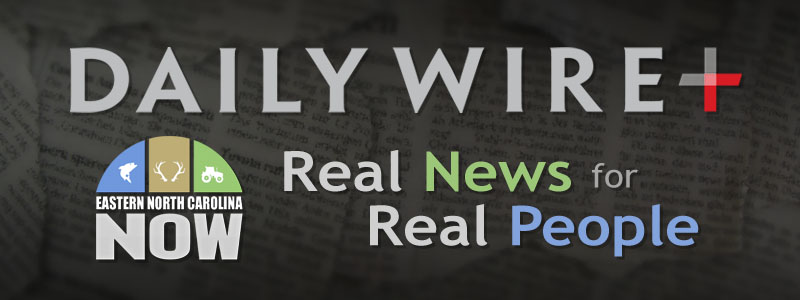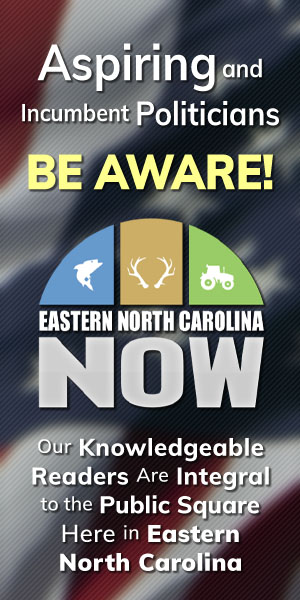Committed to the First Amendment and OUR Freedom of Speech since 2008
Pushing Back Against the 'High-Poverty School' Line
Publisher's note: This week's "Daily Journal" guest columnist is Donna Martinez, Carolina Journal, Radio Co-Host, John Hood Publisher, and Right Angles blogger.
RALEIGH Defenders of the public education status quo like to claim that kids from low-income communities in North Carolina get the short end of the funding stick when compared with kids who live in higher-income areas. They throw out the phrase "high-poverty schools" when discussing everything from student assignment and teacher performance to class size and testing.
Their funding accusation isn't accurate -- one visit to the Department of Public Instruction's website debunks the claim (PDF link) -- but it's a convenient way to tar a policy opponent as uncaring, while shifting attention away from lackluster student achievement and fending off innovations deemed a threat to the bureaucracy.
The notion that poor
 kids are treated unfairly by those who dole out the cash makes for startling headlines -- as it should, if it were true. A look at the state's K-12 funding model shows why it isn't.
kids are treated unfairly by those who dole out the cash makes for startling headlines -- as it should, if it were true. A look at the state's K-12 funding model shows why it isn't.
In North Carolina, only about 25 percent of each child's public education check is derived from local governments' property tax revenues. Nearly two-thirds -- about 65 percent -- is provided by North Carolina taxpayers. The remaining 10 percent or so is given to North Carolina from federal tax revenues. The ratio shifted slightly when federal "stimulus" dollars increased the federal portion.
This funding ratio means combined state and federal dollars account for 75 percent or so of each child's tuition check to a public school. That serves to limit the negative impact of a modest neighborhood's lower property values.
But there's another safeguard for less affluent areas. It comes in the form of additional funding from special pots of federal and state money. Because policymakers have decided that living in a low-income county presents a particular challenge, the district that teaches each affected child receives additional money for each one.
The result is that some of North Carolina's poorest and smallest counties receive the biggest per-pupil tuition check. Put another way, districts that teach kids from low-income communities actually receive more education dollars per child than districts that teach kids from more affluent communities.
The Department of Public Instruction's February 2012 budget highlights document lists the numerous circumstances that trigger the appropriation of extra dollars above and beyond what other children are allotted. DPI also lists the amount of the additional funding.
It's an eyeopener.
From state coffers, additional funds are handed out for students from a low-income family ($357.64); those with special learning issues ($3,649.02); those from a small county ($693.95); disadvantaged students ($240.55); those from one of North Carolina's 69 counties deemed low-wealth ($291.47); limited English proficiency ($756.06); intellectually and academically gifted ($440.54); career and technical vocation ($744.54); and Learn & Earn ($52.19).
From federal coffers, additional funds are handed out to each North Carolina student from a low-income family ($1,180.56); special learning issue ($1,691.69 or $2,437.87 depending on grade); limited English proficiency ($3,443.14); career and technical education ($27.86). The impact of these additional dollars is substantial, according to DPI. The agency even offers several examples. In the case of a K-3 academically gifted student from a low-income family living in a small, low-wealth county, DPI reports the district receives an additional $2,964.16, for a total of $8,406.88 to educate that child.
In the case of a disadvantaged K-3 child from a low-income family living in a small, low-wealth county and with limited English proficiency and special learning issues, DPI reports the district receives an additional $13,050.26, for a total of $18,492.98 to educate that child.
Those who push the "high-poverty schools" line either know it's not true or haven't bothered to review DPI's documents.
Challenges are very real for kids growing up poor. When mom and dad are focused on and worried about paying the electric bill and buying groceries with payday still 10 days away, it's tough to find energy and time for homework, the library, or the PTA. For kids with only one parent day to day, the time and energy deficit is even more pronounced.
By choosing to focus primarily on money, progressives and like-minded bureaucrats divert time and brainpower away from private and public-sector innovations to ensure kids achieve. In North Carolina, these kids face many challenges, but being at a funding disadvantage because they're poor isn't one of them.
Go Back
RALEIGH Defenders of the public education status quo like to claim that kids from low-income communities in North Carolina get the short end of the funding stick when compared with kids who live in higher-income areas. They throw out the phrase "high-poverty schools" when discussing everything from student assignment and teacher performance to class size and testing.
Their funding accusation isn't accurate -- one visit to the Department of Public Instruction's website debunks the claim (PDF link) -- but it's a convenient way to tar a policy opponent as uncaring, while shifting attention away from lackluster student achievement and fending off innovations deemed a threat to the bureaucracy.
The notion that poor

Donna Martinez, Carolina Journal, Radio Co-Host
In North Carolina, only about 25 percent of each child's public education check is derived from local governments' property tax revenues. Nearly two-thirds -- about 65 percent -- is provided by North Carolina taxpayers. The remaining 10 percent or so is given to North Carolina from federal tax revenues. The ratio shifted slightly when federal "stimulus" dollars increased the federal portion.
This funding ratio means combined state and federal dollars account for 75 percent or so of each child's tuition check to a public school. That serves to limit the negative impact of a modest neighborhood's lower property values.
But there's another safeguard for less affluent areas. It comes in the form of additional funding from special pots of federal and state money. Because policymakers have decided that living in a low-income county presents a particular challenge, the district that teaches each affected child receives additional money for each one.
The result is that some of North Carolina's poorest and smallest counties receive the biggest per-pupil tuition check. Put another way, districts that teach kids from low-income communities actually receive more education dollars per child than districts that teach kids from more affluent communities.
The Department of Public Instruction's February 2012 budget highlights document lists the numerous circumstances that trigger the appropriation of extra dollars above and beyond what other children are allotted. DPI also lists the amount of the additional funding.
It's an eyeopener.
From state coffers, additional funds are handed out for students from a low-income family ($357.64); those with special learning issues ($3,649.02); those from a small county ($693.95); disadvantaged students ($240.55); those from one of North Carolina's 69 counties deemed low-wealth ($291.47); limited English proficiency ($756.06); intellectually and academically gifted ($440.54); career and technical vocation ($744.54); and Learn & Earn ($52.19).
From federal coffers, additional funds are handed out to each North Carolina student from a low-income family ($1,180.56); special learning issue ($1,691.69 or $2,437.87 depending on grade); limited English proficiency ($3,443.14); career and technical education ($27.86). The impact of these additional dollars is substantial, according to DPI. The agency even offers several examples. In the case of a K-3 academically gifted student from a low-income family living in a small, low-wealth county, DPI reports the district receives an additional $2,964.16, for a total of $8,406.88 to educate that child.
In the case of a disadvantaged K-3 child from a low-income family living in a small, low-wealth county and with limited English proficiency and special learning issues, DPI reports the district receives an additional $13,050.26, for a total of $18,492.98 to educate that child.
Those who push the "high-poverty schools" line either know it's not true or haven't bothered to review DPI's documents.
Challenges are very real for kids growing up poor. When mom and dad are focused on and worried about paying the electric bill and buying groceries with payday still 10 days away, it's tough to find energy and time for homework, the library, or the PTA. For kids with only one parent day to day, the time and energy deficit is even more pronounced.
By choosing to focus primarily on money, progressives and like-minded bureaucrats divert time and brainpower away from private and public-sector innovations to ensure kids achieve. In North Carolina, these kids face many challenges, but being at a funding disadvantage because they're poor isn't one of them.
| Carolina Cronyism: Introduction, Overview, and Reforms | John Locke Foundation Guest Editorial, Editorials, Op-Ed & Politics | Diane Rufino Defends Nullification and her "Gray Matter" |
Latest Op-Ed & Politics
|
illegal alien "asylum seeker" migrants are a crime wave on both sides of the Atlantic
Published: Thursday, April 18th, 2024 @ 8:10 am
By: John Steed
|
|
UNC board committee votes unanimously to end DEI in UNC system
Published: Thursday, April 18th, 2024 @ 7:54 am
By: John Steed
|
|
this is the propagandist mindset of MSM today
Published: Wednesday, April 17th, 2024 @ 3:04 pm
By: John Steed
|
|
Police in the nation’s capital are not stopping illegal aliens who are driving around without license plates, according to a new report.
Published: Wednesday, April 17th, 2024 @ 8:59 am
By: Daily Wire
|
|
same insanity that created Covid
Published: Wednesday, April 17th, 2024 @ 8:58 am
By: John Steed
|
|
Davidaon County student suspended for using correct legal term for those in country illegally
Published: Wednesday, April 17th, 2024 @ 7:23 am
By: John Steed
|
|
given to illegals in Mexico before they even get to US: NGOs connected to Mayorkas
Published: Tuesday, April 16th, 2024 @ 11:36 am
By: John Steed
|






















